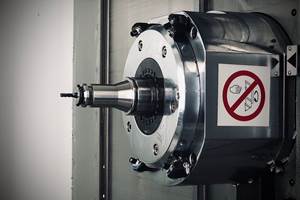Not many manufacturers can claim to have been cited in a State of the Union address. Center Rock Inc. of Berlin, Pennsylvania got nearly 200 words in President Obama’s speech to Congress on January 26. The maker of rock drilling tools produced the custom drills that were used to free the 33 trapped miners in Chile—the miners whose rescue was seen and celebrated around the world in October 2010.
Brandon Fisher, Center Rock’s president and founder (seen in the upper right in the second photo at right), was already back home from Chile by the time those men were freed. His company’s role in the drama was complete once the 2,000-foot-deep hole had been successfully drilled. At that point, Mr. Fisher, along with Center Rock’s Julie Fisher and senior engineer Richard Soppe, left the site to get out of the rescuers’ way.
For the Center Rock team, that drama actually had begun back in the machine shop, on the day the Chileans accepted the company’s offer of assistance in the emergency. When news of this emergency became clear, Mr. Fisher committed his company to producing the drills needed for the rescue as quickly as physically possible—at the cost of putting every other active job on hold. Because the forged steel bits used in these drills were tailored to the demands of the rock composition in Chile, the bits were machined from scratch. One might think that a process involving seven different machine-tool setups, not to mention trips to subcontractors in the midst of the machining, could not possibly be responsive—but Center Rock proved differently.
The manufacturing drama at Center Rock is the subject of the latest episode of
The Edge Factor, an online show about the excitement and importance of modern manufacturing. That episode is now playing at
edgefactor.com. In it, Mr. Fisher describes his company’s involvement in a moment when manufacturing and machining became perilously significant to the lives of 33 men.
One of the points The Edge Factor episode gets to make is that technology is not necessarily pretty. Perhaps the most valuable machining operation at Center Rock takes place on a seemingly unsightly machine. (More on that below.)
Yet for the metalworking professionals reading this magazine, the more significant lessons of Center Rock’s machining process actually do relate to technology that is sleek in its level of sophistication.
Specifically, the company has a “done in one” machine tool—a Doosan Puma Series MX 2500 ST turning center featuring both a secondary spindle and live tooling. On this machine, a drill bit part could conceivably be taken all the way from raw forging to the heat-treat stage within a single machining cycle, rather than the series of setups needed to produce large bits such as the ones that went to Chile. However, the shop doesn’t necessarily opt for the one-setup approach.
That machine is part of a spectrum of turning equipment in the shop, with the level of multitasking capability increasing as part sizes go down. The newest machine in the shop is for turning only—a Doosan CNC lathe with a maximum turning diameter of 22 inches. A mid-size machine from the same builder offers live tooling but no secondary spindle.
With these machines, Center Rock is exploring the right level of multitasking for its parts. One of the lessons Center Rock shows is this: Just because the company can produce some of its bits with very few setups, that doesn’t necessarily mean that it should.
Real Emergency
Steve Bungard is Center Rock’s manufacturing manager. “We run a lot of so-called ‘emergency’ jobs,” he says. “This is the first one that was an actual life-or-death emergency.”
The Chileans accepted Center Rock’s offer of help on a Friday. Employees began setup and machining work that day. The work continued into the night. Heat treat and shot peen suppliers were alerted to the emergency need. Final machining of the bits began as soon as the parts could be retrieved from these suppliers, and the fabrication and final assembly of the completed drills began as soon as the machining of these bits allowed. The completed drills were shipped on Sunday. In the end, manufacturing the drills from scratch took less time than what would be required to transport the drills from the airport in Chile to the remote site of the collapsed mine.
Center Rock’s larger drill bits see the most setups. For one of these parts, the work of turning both ends, preparing the part for a holemaking operation, and detailing the machined hole together entails four lathe setups. The part then goes to an HMC from Mazak for spline milling, milling the rock-cutting face and drilling recesses that hold the carbide cutting elements. This machining center work requires three setups—two before heat treatment and one after.
Machining any of the drill bit forgings is difficult. That’s because the parts do difficult work. It is not hard to imagine the stresses the bits see as they cut through thousands of feet of rock. The forged steel able to resist these stresses is similarly resistant to machining. One particularly challenging machined feature is a hole in the part’s stem that extends through almost the entire length of the bit. This hole mates with smaller holes to form a conduit for high-pressure air blowing bits of rock away from the face of the drill. Machining this hole used to be a struggle involving broken tools and long cycle times—but not anymore.
About 5 years ago, Center Rock’s staff engineered the process that now machines this deep hole quickly and reliably. The process was built upon an old but rugged manual lathe. An important element of the process is a high-pressure coolant system the shop mated to the lathe. But the very heart of the process is a drill design from Sandvik Coromant—a Corodrill 800 tool featuring a large hollow area through its center. Center Rock mounts this tool to a long cylinder-within-a-cylinder shaft along the centerline of the lathe spindle. Coolant shoots through the annular space between the cylinders to facilitate cutting. Then, thanks to the design of the Corodrill, the coolant and metal chips are drawn out of the cut and through the internal cylinder via vacuum pressure. With this deep drilling process, the shop routinely achieves a productive 0.012-ipr feed rate, long tool life and excellent ID surface finishes, Mr. Bungard says.
Setups and Beyond
Smaller rock-drilling bits see fewer setups than the sequence described above. This is because of the combined turning and milling capabilities of the shop’s smaller turning centers, which allow the company’s most popular drill-bit sizes to be run more productively. The smallest-diameter bits could be machined (up to the point of heat treatment) within a one-setup process. Given that a single drill requires fewer than 20 bits (often fewer than 10), this might seem like the best method. Yet the shop instead frequently machines its small bits across a series of setups, with work sometimes proceeding through the shop in batches of 100 or more. From Center Rock’s perspective, why does batch manufacturing employing a sequence of setups remain the better approach? The answer to this question is potentially useful for any shop that is evaluating multitask machining capability.
As Center Rock shows, this capability is valuable for reasons that go beyond just single-setup machining. The freedom to perform more machining in one place enhances Center Rock’s production capacity, even if that freedom is not used to machine a part all the way to completion. For example, the smallest bits often receive stem-end turning, pilot hole drilling and spline milling in a single, efficient turning center setup. However, the cycle then stops.
There are various reasons why machining doesn’t proceed any farther toward completing the part within this cycle. The reasons have to do with all of the following factors:
1. Dedicated drilling machine. A setup isn’t bad if it saves cost. Center Rock adds an extra setup to drill the blind hole using its own dedicated hole-making machine because this machine is more effective for that work. The time and tool life savings easily justify the added setup time.
2. Response time. The machining left out of the cycle above includes the geometry of the face. This is the part of the bit that varies most from drill to drill. Often this face geometry is custom. Therefore, in order to respond to customers quickly, Center Rock machines everything except the face geometry and keeps the semi-completed bits waiting on the shelves. Keeping this stock does not add much inventory cost because of the next point.
3. Inventory already built in. Lead times for forgings are long, particularly during periods when manufacturing activity is strong. Center Rock recently watched its wait times for forgings grow from 6 weeks to 20 weeks. The only way the company can accommodate this delay is by ordering plenty of forgings at once to maintain a large buffer. Given that the company must carry this inventory anyway, it makes sense to machine some of it to a nearly ready state.
People First
One final important factor affecting the impact of setups relates to where Center Rock earns its income. The company does not just supply a manufactured product, it supplies an engineered product. In fact, increasingly the rock drill is a custom-engineered product, as customers use resources like GoToMeeting to work with Center Rock designers in real time to specify precisely the rock-drilling geometry they want to use. Even when this level of customer involvement isn’t involved, though, Center Rock personnel select or tailor drills to specific customer applications. With its technical expertise and capacity to innovate, the company can deliver high value to customers—high enough value that it need not matter significantly whether seven setups or three go into making the parts.
For Center Rock, the center is the people—including the customers and the core of experienced employees necessary to serve these customers at an advanced level. “People first” is a cliché, but also an easy principle to forget. Fortunately for Center Rock, the company got to experience a reminder of this principle—a brief interlude when the company was focused not on customers, not on employees, but instead was devoted entirely to the fates of 33 desperate men whose lives might yet be saved.







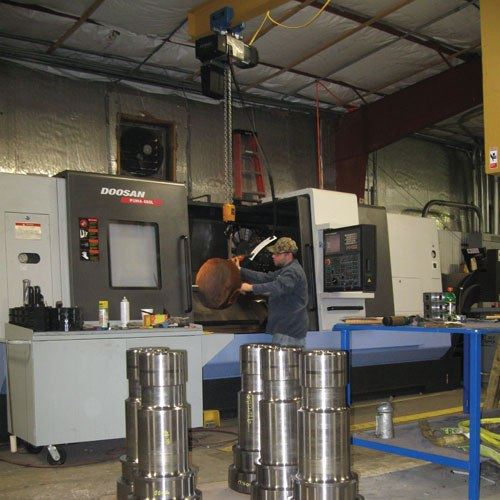
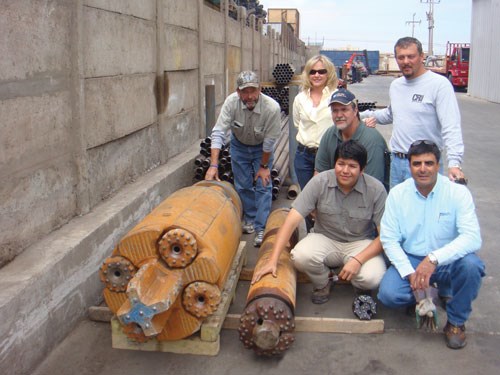
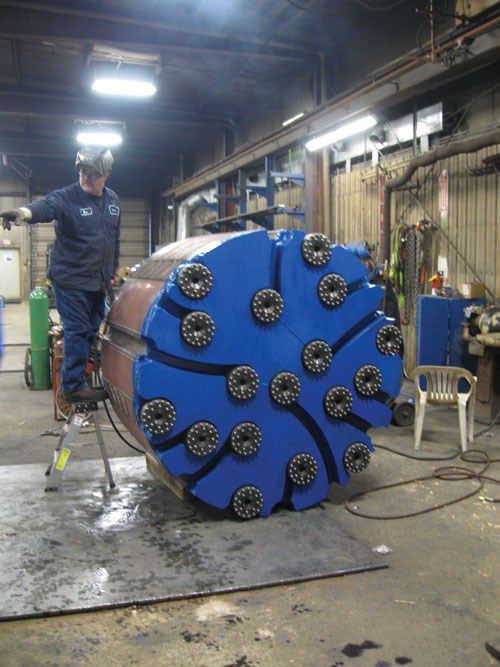
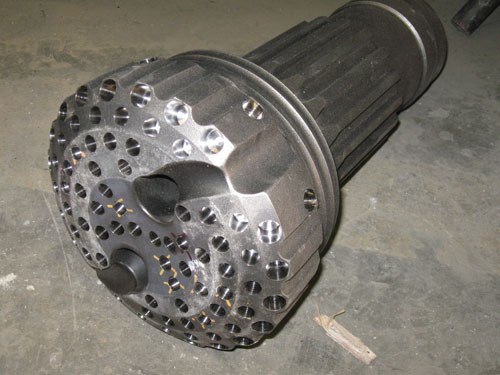
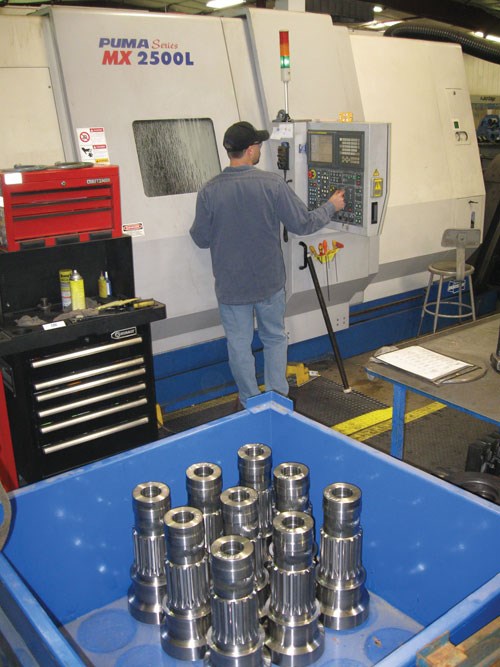
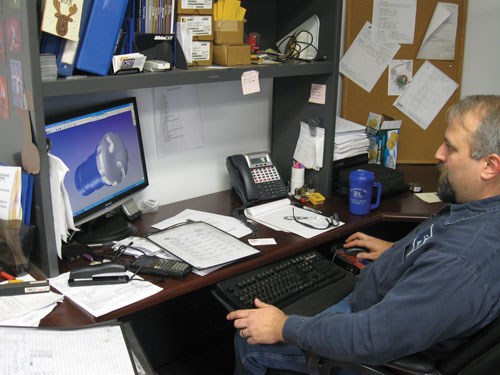
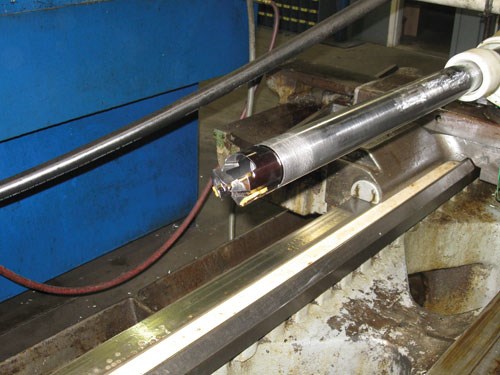
















.jpg;maxWidth=300;quality=90)





